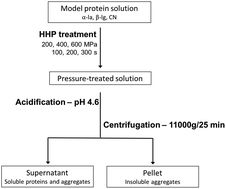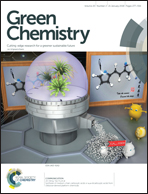The use of high hydrostatic pressure to modulate milk protein interactions for the production of an alpha-lactalbumin enriched-fraction
Abstract
Disposal of whey, a co-product generated from the dairy industries, remains an important worldwide problem. However, considering its composition in high value proteins, some technological strategies have emerged for its optimal valorization. Separating alpha-lactalbumin (α-la) from beta-lactoglobulin (β-lg), the two major whey proteins (WP), remains quite challenging to scale up especially using eco-efficient technology due to their similar molecular weights. As a novel approach, we proposed to improve the fractionation of these WP and the recovery of α-la, using high hydrostatic pressure (HHP), an emerging and green technology, combined with acidification to pH 4.6. For this, model protein solutions containing α-la, β-lg and casein (CN – isoelectric, IC and micellar, MC) were treated by HHP and acidified to pH 4.6, with the aim of optimising HHP parameters (level of pressure and time) and the type of CN. The pressure treatment rendered β-lg insoluble forming aggregates with CN and precipitates after acidification to pH 4.6, while α-la remained soluble. Analysis of pressure-treated solutions before acidification showed two main categories of generated-aggregates: (1) κ-CN, αs2-CN and a large portion of β-lg, mainly linked via disulfide bonds, and (2) αs1-CN, αs2-CN, β-CN and a small amount of β-lg, supposedly linked through hydrophobic interactions. The pressure/time combination of 600 MPa/300 s generated the highest α-la purification degree (86%) and protein recovery (77%) using IC. Our experiments, performed on model dairy solutions, demonstrated that the HHP-based fractionation process could be employed in dairy whey processing for the recovery of highly valuable proteins such as α-la.



 Please wait while we load your content...
Please wait while we load your content...